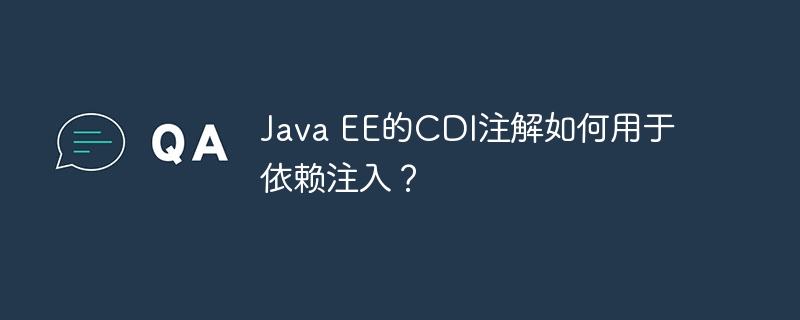
Yes, the CDJ annotations used for dependency injection in Java EE include: @Inject: Inject dependencies. @Produces: Declares methods to produce dependencies. @Disposes: Declares a method to be called when a dependency is released. @Dependent: Specify the scope of the bean as the request scope. @ApplicationScoped: Specifies that the scope of the bean is application scope.

CDJ annotations in Java EE are used for dependency injection
In Java Enterprise Edition (Java EE), dependency injection (DI ) is a technology that simplifies application development. With DI, instead of manually creating and managing dependencies, you can declare dependencies through annotations. These annotations will be automatically parsed and injected by the container (such as the GlassFish server).
CDI Annotations
In Java EE, the Context and Dependency Injection (CDI) specification provides a set of annotations for DI. These annotations include:
@Inject: used to inject a dependency.@Produces: Used to declare that a method generates a dependency.@Disposes: Used to declare a method to be called when the dependency is no longer needed.@Dependent: Used to specify that the scope of a bean is the request scope.@ApplicationScoped: Used to specify that the scope of a bean is the application scope.Practical case
Suppose we have aUserServiceclass, which depends on theUserRepositoryinterface. Using CDI, we can declare dependencies in the following way:
import javax.inject.Inject; public class UserService { @Inject private UserRepository userRepository; // ... }
In the above code, the@Injectannotation indicates that theuserRepositoryfield should be automatically injected by the container.
import javax.enterprise.inject.Produces; import javax.persistence.EntityManager; import javax.persistence.PersistenceContext; public class UserRepositoryProducer { @PersistenceContext private EntityManager em; @Produces private UserRepository createUserRepository() { return new UserJpaRepository(em); } }
In this example, the@Producesannotation is used to declare that thecreateUserRepositorymethod is responsible for producing the implementation ofUserRepository, while the@PersistenceContextAnnotations are used to injectEntityManagerinto methods.
Conclusion
CDI annotations provide a simple and efficient way to implement dependency injection. By using these annotations, you can reduce boilerplate code and make your application more modular and maintainable.
The above is the detailed content of How are Java EE's CDI annotations used for dependency injection?. For more information, please follow other related articles on the PHP Chinese website!




